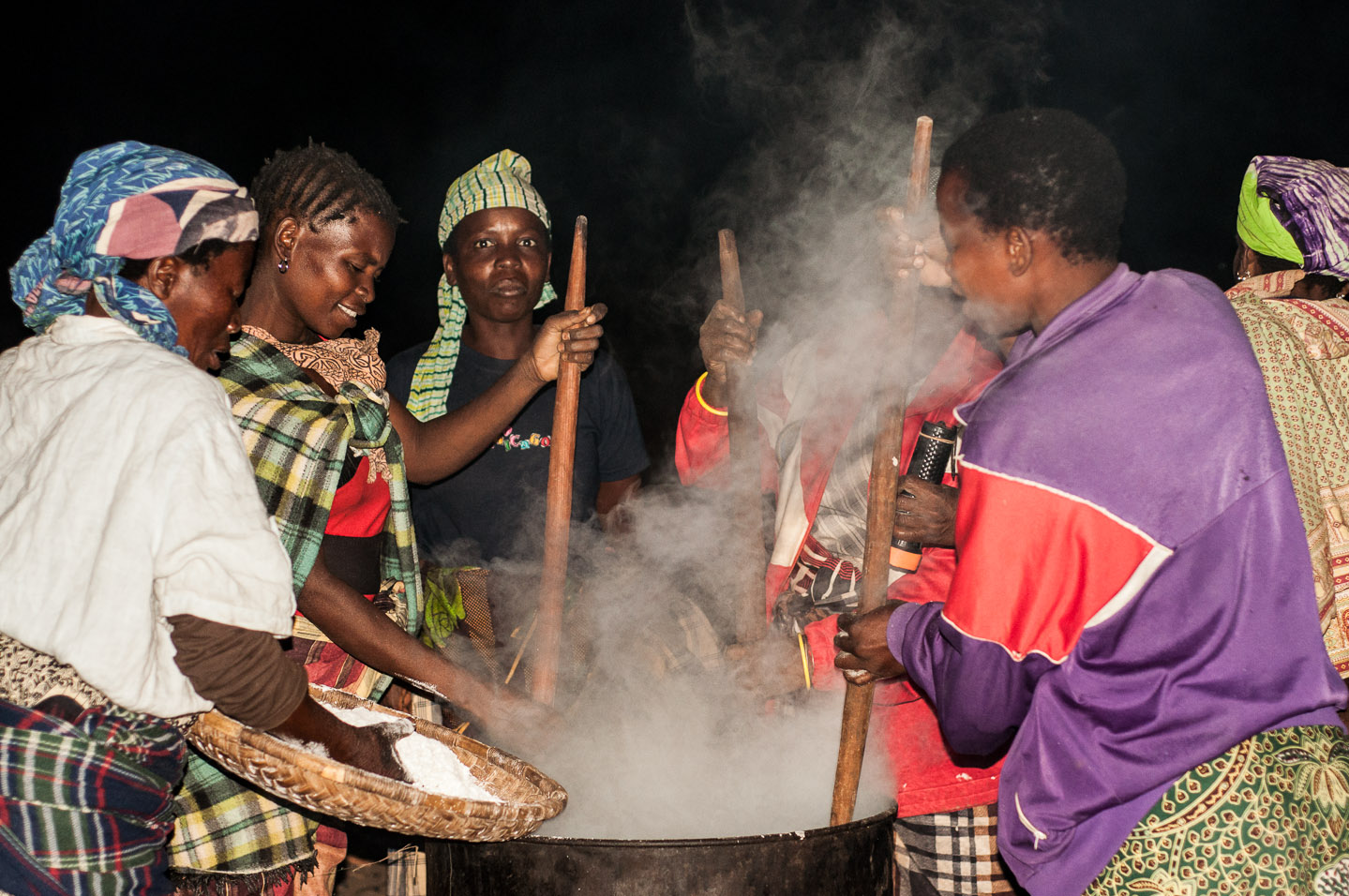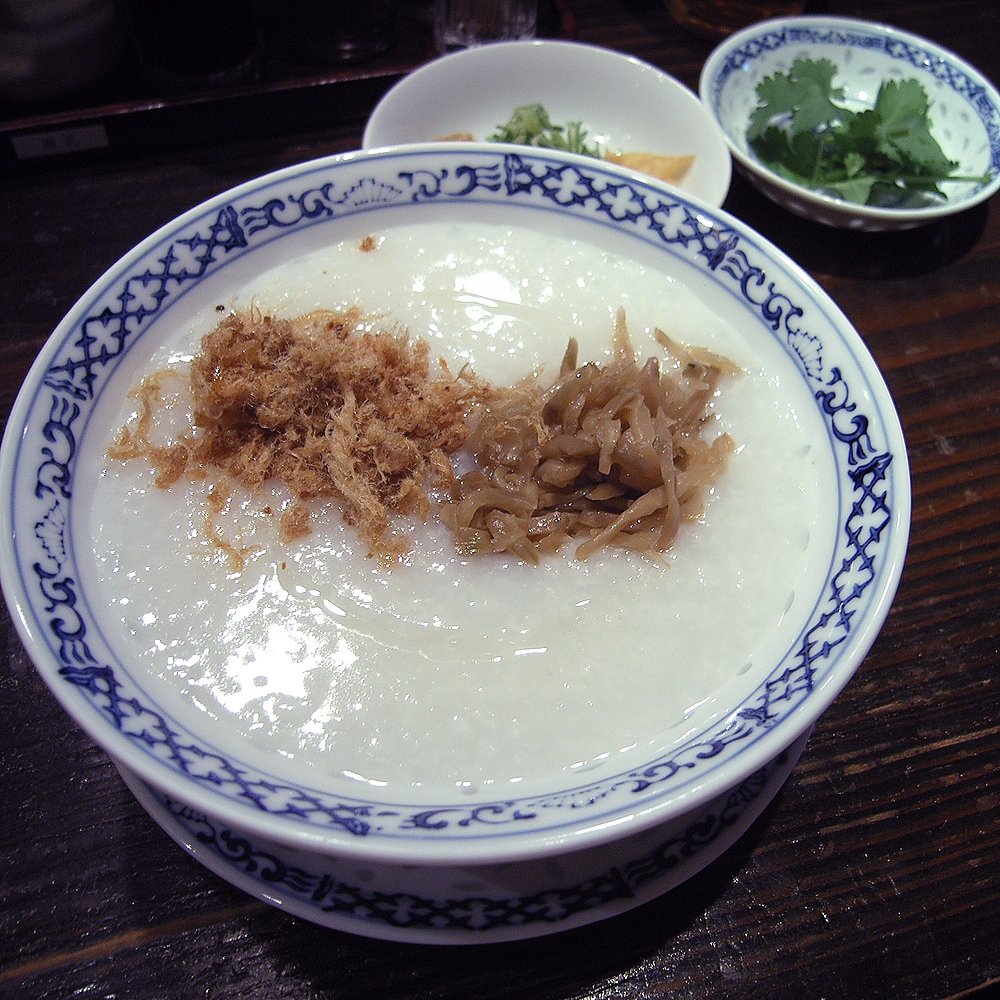|
┼Įganci
┼Įganci is a dish in Slovenian and Croatian cuisine, also called ''pura'' on the Croatian coast. It is a traditional "poor man's food" of hard-working farmhands similar to polenta, although prepared with finer grains. Preparation The dish is made from buckwheat flour in Slovenia () and cornmeal in Croatia (), cooking oil and salt, which is cooked for fifteen minutes on a low boil. Softer ''┼Šganci'' is called Styrian style in Slovenia. ''┼Įganci'' can be served with milk (''┼Šganci z mlekom/┼Šganci s mlijekom''), honey, lard and cracklings, or runny yogurt. A savory version is served with meat as part of a main dish. ┼Įganci in Slovenia ''┼Įganci'' was a typical everyday meal of the central and Alpine parts of Slovenia. Its popularity and common use is implied in the following witticism from the 19th century: "''┼Įganci'' are the pedestal of Carniola." This attitude implies its crucial meaning for the survival of the population. Freshly boiled ''┼Šganci'' could be served as brea ... [...More Info...] [...Related Items...] OR: [Wikipedia] [Google] [Baidu] |
Croatian Cuisine
Croatian cuisine () is heterogeneous and is known as a cuisine of the regions, since every region of Croatia has its own distinct culinary tradition. Its roots date back to Classical Antiquity, ancient times. The differences in the selection of foodstuffs and forms of cooking are most notable between those in mainland and those in coastal regions. Mainland cuisine is more characterized by Slavic features and influences from the more recent contacts with Turkish cuisine, Turkish, Hungarian cuisine, Hungarian and Austrian cuisine, Austrian cuisine, using lard for cooking, and spices such as black pepper, paprika, and garlic. The coastal region bears the influences of Greek cuisine, Greek and Roman cuisine, Roman cuisine, as well as of the later Mediterranean cuisine, in particular Italian cuisine, Italian (especially Venetian). Coastal cuisines use olive oil, herbs and spices such as rosemary, Salvia officinalis, sage, bay leaf, oregano, marjoram, cinnamon, clove, nutmeg, and lemon a ... [...More Info...] [...Related Items...] OR: [Wikipedia] [Google] [Baidu] |
Upper Carniola
Upper Carniola ( ; ; ) is a traditional region of Slovenia, the northern mountainous part of the larger Carniola region. The largest town in the region is Kranj, and other urban centers include Kamnik, Jesenice, Jesenice, Jesenice, Dom┼Šale and ┼Ākofja Loka. It has around 300,000 inhabitants or 14% of the population of Slovenia. Historical background Its origins as a separate political entity can be traced back to the 17th century, when the Habsburg monarchy, Habsburg duchy of Duchy of Carniola, Carniola was divided into three administrative districts. This division was thoroughly described by the scholar Johann Weikhard von Valvasor in his 1689 work ''The Glory of the Duchy of Carniola''. The districts were known in German as (; ''kresija'' in old Slovene). They were: ''Upper Carniola'' with its administrative seat in Ljubljana, comprising the northern areas of the duchy; ''Lower Carniola'', comprising the east and south-east, with its administrative seat in Novo Mesto; an ... [...More Info...] [...Related Items...] OR: [Wikipedia] [Google] [Baidu] |
Pudding Corn
Corn pudding (also called pudding corn, puddin' corn, hoppy glop, or spoonbread) is a creamy dish prepared from stewed corn, water, any of various thickening agents, and optional additional flavoring or texturing ingredients. It is typically used as a food staple in rural communities in the Southern United States, especially in Appalachia. Corn pudding has sometimes been prepared using "green corn", which refers to immature ears of corn that have not fully dried. Green corn is not necessarily green in color. The cooking of the corn pulp when preparing the dish can serve to thicken it. Corn pudding is sometimes served as a Thanksgiving dish. Corn pudding may be sweet or savory. File:Sweet Vegan Corn Tomatillo Pudding (4276798329).jpg, Sweet vegan corn-tomatillo pudding Similar dishes Corn pudding is not to be confused with hasty pudding, which is typically made from ground corn, rather than whole kernel corn. See also * Bread pudding * Creamed corn * Corn chowder * Corn ... [...More Info...] [...Related Items...] OR: [Wikipedia] [Google] [Baidu] |
Pap (food)
Ugali, also known as posho, nsima, papa, pap, sadza, isitshwala, akume, amawe, ewokple, akple, and other names, is a type of corn meal made from maize or corn or ''mahindi'' flour in several African countries: Kenya, Uganda, Tanzania, Zimbabwe, Zambia, Lesotho, Eswatini, Angola, Mozambique, Namibia, Democratic Republic of the Congo, Malawi, Botswana and South Africa, and in West Africa by the Ewes of Togo, Ghana, Benin, Nigeria and C├┤te d'Ivoire. It is cooked in boiling water or milk until it reaches a stiff or firm dough-like consistency. In 2017, the dish was added to the UNESCO Representative List of the Intangible Cultural Heritage of Humanity, one of a few foods on the list. Names This dish is eaten widely across Africa, where it has different local names: Etymology The word ''ugali'' is an African term derived from Swahili; it is also widely known as ''nsima'' in Malawian languages such as Chichewa and Chitumbuka. In parts of Kenya, the dish also goes by t ... [...More Info...] [...Related Items...] OR: [Wikipedia] [Google] [Baidu] |
Mush (cornmeal)
Mush is a type of cornmeal pudding (or porridge) which is usually boiled in water or milk. It is often allowed to set, or gel into a semisolid, then cut into flat squares or rectangles, and pan fried. Cornmeal mush is especially popular amongst Amish people as well as in parts of the Midwestern United States. In Eastern Europe, milk is poured over the meal once served and cooled down, rather than being boiled in it. Cornmeal mush is often consumed in Latin America and Africa. See also * Cornbread * Grits * Gruel * Hasty pudding * Hominy * Hushpuppy * Johnnycake * List of maize dishes * List of porridges * M─ām─ālig─ā * Milho frito * Polenta Polenta (, ) is an Italian cuisine, Italian dish of boiled cornmeal that was historically made from other grains. It may be allowed to cool and solidify into a loaf that can be baked, fried or Grilling, grilled. The variety of cereal used is ... * Pudding corn * Samp * Ugali References * * * Cuisine of the So ... [...More Info...] [...Related Items...] OR: [Wikipedia] [Google] [Baidu] |
Masa
''Masa'' or ''masa de ma├Łz'' (; ) is a dough made from ground nixtamalized maize. It is used for making corn tortillas, '' gorditas'', '' tamales'', '' pupusas'', and many other Latin American dishes. It is dried and powdered into a flour form called ''harina de ma├Łz'' or ''masa harina''. Masa is reconstituted by mixing with water before using it in cooking. In Spanish, ''masa harina'' translates simply to 'dough flour', and can refer to many other types of dough. Preparation Field corn grain is dried and then treated by cooking the mature, hard grain in a diluted solution of slaked lime (calcium hydroxide) or wood ash, and then letting it soak for many hours. The soaked maize is then rinsed thoroughly to remove the unpalatable flavor of the alkali. This process is nixtamalization, and it produces hominy, which is ground into a relatively dry dough to create fresh masa. The fresh masa can be sold or used directly, or can be dehydrated and blended into a powder to create m ... [...More Info...] [...Related Items...] OR: [Wikipedia] [Google] [Baidu] |
M─ām─ālig─ā
M─ām─ālig─ā (;) is a polenta-like dish made out of yellow maize flour, traditional in Romania, Moldova, south-west regions of Ukraine and among Poles in Ukraine (''mama┼éyga''), Hungary (''puliszka''), the Black Sea regions of Georgia (country), Georgia and Turkey, and Thessaly and Phthiotis, as well as in Bulgaria (''ka─Źamak'') and in Greece. It is also eaten in Italy, Switzerland, Southern France, Slovenia, Croatia, Brazil, often with the name ''polenta''. History Historically a peasant food, it was often used as a substitute for bread or even as a staple food in the poor rural areas. However, in the last decades it has emerged as an upscale dish available in the finest restaurants. Maize was consumed by Romani people, Romani slaves in Wallachia and Moldavia, as well as Muslims, Muslim slaves, who were Prisoner of war, prisoners of war. Roman influence Historically, porridge is the oldest form of consumption of grains in the whole of humanity, long before the appearanc ... [...More Info...] [...Related Items...] OR: [Wikipedia] [Google] [Baidu] |
List Of Porridges
Porridge is a dish made by boiling ground, crushed, or chopped starchy plants (typically grains) in water, milk, or both, with optional flavorings, and is usually served hot in a bowl or dish. It may be served as a sweet or savory dish, depending on the flavourings. Porridges A * Atole traditional masa-based hot maize based beverage of Mexican cuisine, Mexican and Latin American cuisine, Central American origin. It includes masa (corn hominy flour), water, piloncillo (unrefined cane sugar), cinnamon, vanilla and optional chocolate or fruit. The mixture is blended and heated before serving. * Avena (drink) prepared with stewed oatmeal, milk, water, cinnamon, clove and sugar *Arroz caldo, Arroz caldo or aroskaldo ŌĆō a variant of congee in Filipino cuisine, Philippine cuisine. B * Barley gruel type of porridge found in Danyang, Jiangsu. It is made from barley, rice and alkali. * Belila (porridge), Belila is an Egyptian porridge made from pearl wheat, cooked in a light syrup with ... [...More Info...] [...Related Items...] OR: [Wikipedia] [Google] [Baidu] |
List Of Maize Dishes
This is a list of maize dishes, in which maize (corn) is used as a primary ingredient. Additionally, some foods and beverages that are prepared with maize are listed. Ingredients Corn can be processed into an intermediate form to be cooked further. These processes include drying, milling, and nixtamalization. * ', a Chickasaw word meaning, 'Cold Flour'. It consists of parched and pounded ''zea'' (maize) before it reaches maturity. A small quantity of meal is thrown into cold water, where it boils and swells as much as common meal boiled over fire. * * * * * ** ** ** * * * Foods Soups, stews, and porridge Corn, in the form of cornmeal or kernels of fresh sweet corn, can be boiled or stewed. * * * * * * * * * * * * * Funche ŌĆō Puerto Rican cornmeal porridge * * * * * * * K─ünga pirau ŌĆō M─üori dish made of stepped fermented kernels, from New Zealand * * * M─ām─ālig─ā with milk (usually, of cow, but also of sheep or goat), as the first course, ... [...More Info...] [...Related Items...] OR: [Wikipedia] [Google] [Baidu] |
Hasty Pudding
Hasty pudding is a pudding or porridge of grains cooked in milk or water. In the United States, it often refers specifically to a version made primarily with ground ("Indian") corn, and it is most known for being mentioned in the lyrics of "Yankee Doodle", a traditional American song of the eighteenth century. Terminology Since at least the sixteenth century, a dish called hasty pudding has been found in British cuisine. It is made of wheat flour that has been cooked in boiling milk or water until it reaches the consistency of a thick batter or an oatmeal porridge. It was a staple dish for the English for centuries. The earliest known recipes for hasty pudding date to the 17th century. There are three examples in Robert May's '' The Accomplisht Cook''. The first is made with flour, cream, raisins, currants and butter, the second recipe is for a boiled pudding and the third includes grated bread, eggs and sugar. Hasty pudding was used by Hannah Glasse as a term for batter or o ... [...More Info...] [...Related Items...] OR: [Wikipedia] [Google] [Baidu] |



